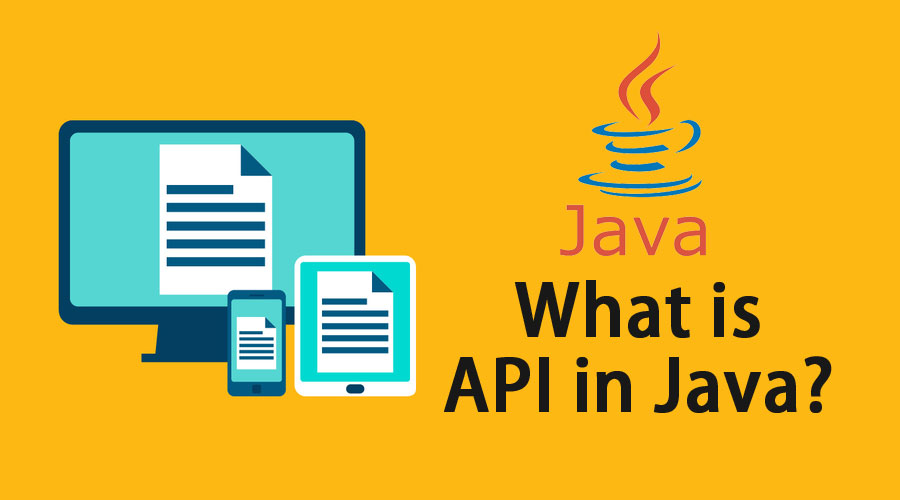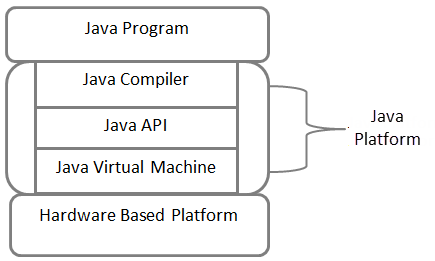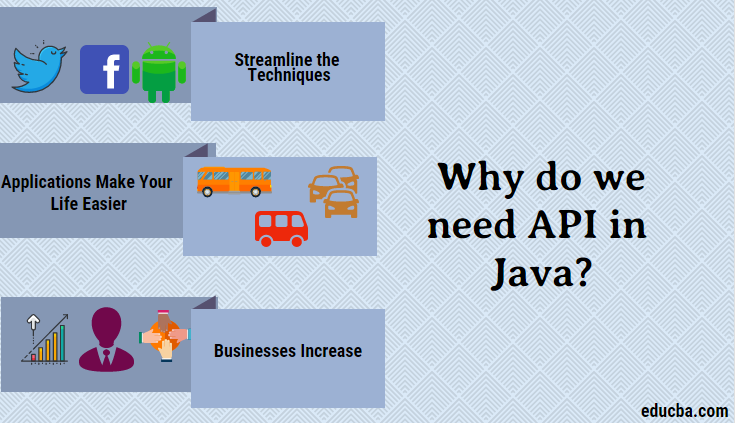Updated July 5, 2023
Introduction to API in Java
An API can be described as a way to enable computers to possess a standard interface, allowing them to communicate. Java Application Programming Interface (API) is the area of Java development kit (JDK). An API includes classes, interfaces, packages, methods, fields, and constructors.
All these built-in classes give benefits to the programmer. Only programmers understand how to apply that class. A user interface offers the basic user interaction between the user and computer; in the same manner, the API works as an application program interface that connects the software and the consumer. API includes classes and packages which usually assist a programmer in minimizing the lines of a program.
Understanding API in Java
Java Development Kit (JDK) is usually made up of three fundamental components, as per below:
1. Java compiler
2. Java Virtual Machine (JVM)
3. Java Application Programming Interface (API)
- The Java API added to the JDK explains the function of every element. In Java programming, several components are pre-created as well as widely used.
- Hence, the programmer can use a prewritten program with the Java API. After mentioning the obtainable API classes and packages, the programmer quickly creates the required program classes and packages to get executed.
- The Java API is a vital element of the JDK and identifies the features of every element. Although Programming in Java, the component is already produced and done it. Through Java, the API coder can make use of the prewritten program.
- The programmers initially declare the classes and packages; then, this coder can use the application program of classes and packages to get executed.
Working with API in Java
The JAX-RS (Java API for Restful Web Services) Client provides the following capabilities:
- Invoke REST endpoints
- Use similar paths/templates as server API
- Improved async invoker support
- Server-sent Events support
Representational State Transfer or REST is a web standards-based architecture and uses HTTP Protocol for data communication.
HTTP methods are commonly used in REST-based architectures like getting, PUT, DELETE, and POST.
When working with Java API, how the asynchronous request handling in JAX-RS client API has been improved. We will look at a real-world example using the JAX-RS client API. Let’s say we will use a JAX-RS client to do a get call to api.ipify.org.
This is an existing service that will report back your IP address. Once we have our IP address in hand, we will use this IP address to call another service called ip.api.com, and as you can see, we have to provide the IP address as part of the path.
When performing this GET call to ip.api.com and providing our IP address, we will get back some information about the location of this IP address based on what is in their databases. Here we have two API calls, the second depending on the first one.
Advantages of API in Java
Automation: With Java APIs, computer systems can control the work instead of people. Organizations can upgrade workflows through APIs to make them faster and more effective.
Application: Since Java APIs can easily access the software components, the delivery of services, as well as data, is much more flexible.
Efficiency: Once a Java API grants access, it enables instant release and availability of the produced content across all channels. This feature allows for quick distribution and sending of Primavera.
Integration: Java APIs allow any site or software to embed content easily. This ensures additional fluid data delivery and then a built-in user experience.
Required Skills
- Knowledge of an MVC framework, including Spring/Play.
- Understanding HTTP protocol (method/response rules), REST/Restful web services, SOAP(optional).
- Knowledge of JSON or perhaps XML or photo buff.
- Basics of the validation framework.
- Any good Persistence system Spring/Hibernate.
Fundamentals of API
These are some fundamentals of API; once you figure out all of these, you can begin to try out:
- Build an API to respond OK then that serves a string or web content
- To respond and consume JSON/XML
- To handle form submissions
- Consuming data (in form, JSON, or XML), validating data, and storing it in a database
- To connect to another API
- To persist data to various data stores SQL/NoSQL
- Updating data in a database
- To delete data in a database
- Secure your API
If you can execute the abovementioned tasks, you could be considered a great API programmer.
Why do we need API in Java?
In Java API more than 4500 API is available in Java Programming.
1. Streamline the Techniques
The Develop Social Intelligent Inbox is an excellent example of this. You will log in to Facebook and Twitter individually, examine messages, operate search terms, and respond as tagged. Due to networks ‘ APIs, you can observe all this in a single view, reducing additional time.
2. Applications Make Your Life Easier
if you use public transportation, you will probably come with an application suggesting when the next tour bus is coming. The application benefits the transit’s API, showing which bus is coming and when. It saves your time and probably in case you are living in a cold environment.
3. Businesses Increase
A business can extend its potential by providing an API. You will find just a lot of assets a company can provide. Developing an API obtainable with developers wanting to develop all of them may increase their offerings to additional customers.
How will this Technology help you in Career Growth?
Java API Developers are good for career growth in most multinational corporations like Flipkart, Walmart, Amazon, and Goldman Sachs, where they use Java API for their large-scale projects.
It is classed based, concurrent, and depends on Object-oriented Programming (oops).
It is a stable language, and Java API jobs many jobs require to design of complex systems use.
Java API has been successfully implemented in Android applications, web applications, Trading Applications, Big Data Technologies, Payments, E-commerce, and more.
Conclusion
- The Java API is simply lightweight in characteristics. Therefore, if you have bandwidth restrictions after that, choose REST web service very simple and fast to build up.
- Using Java API, top sites like Twitter and Yahoo use this pattern.
- Most social media sites like facebook.com benefits from REST web services.
- Mobile App Development is developing quickly, and their server connection uses this REST pattern since it is quicker in processing request and response data.
Recommended Articles
This has been a guide to What is API in Java. Here we discussed the need, fundamentals, career growth, Required skills, working, and its advantages. You can also go through our other suggested articles to learn more –







